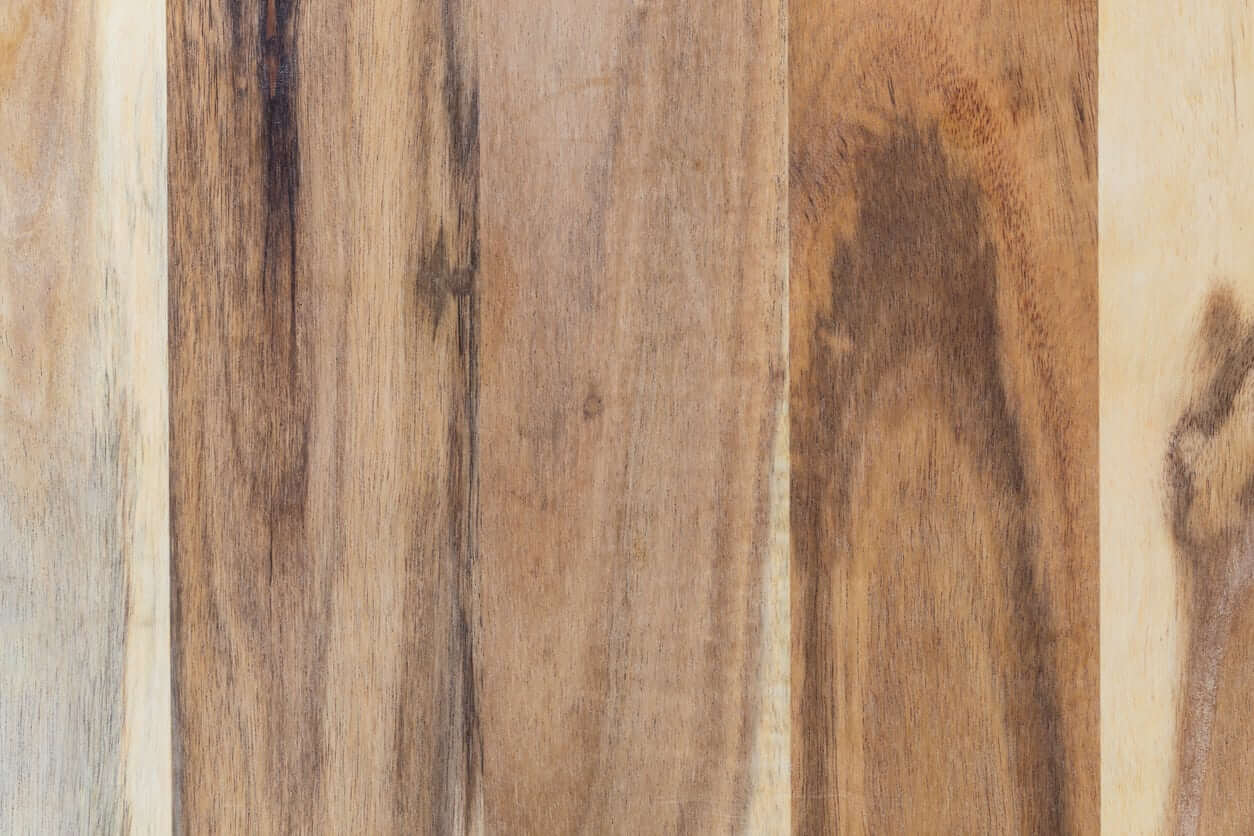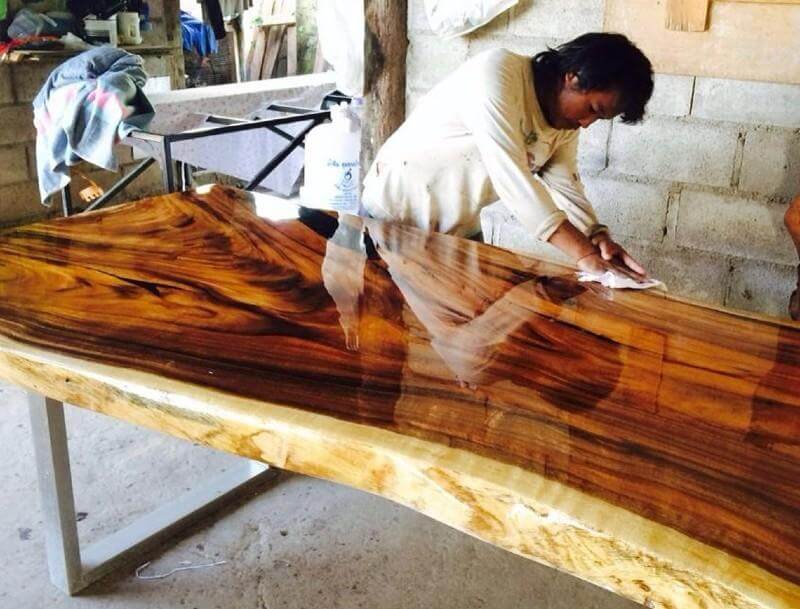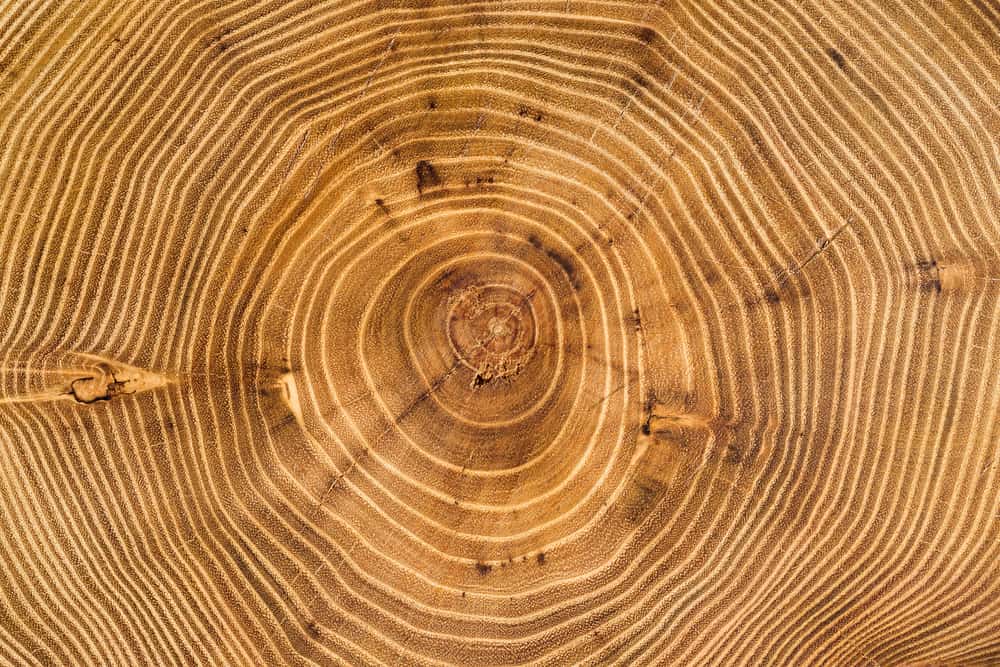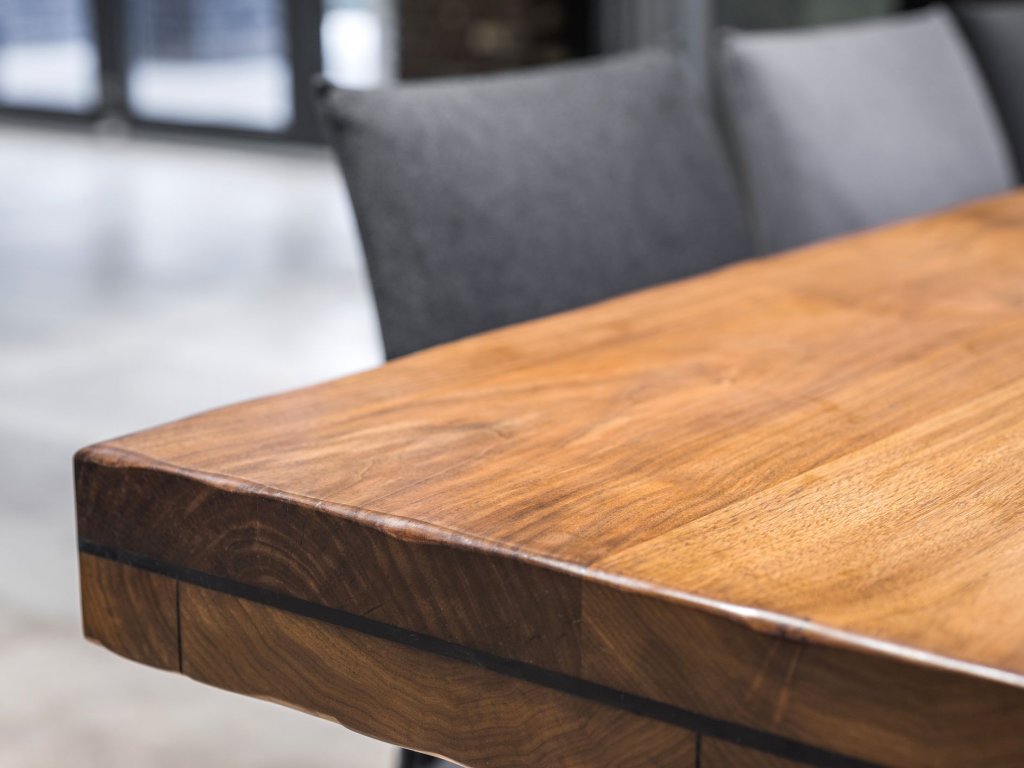Acacia wood, with its deep roots in history and nature, embodies the essence of resilience and versatility.
Originating from the Greek word ἀκακία, meaning ‘thorny Egyptian tree,’ the acacia tree is a testament to the adaptability and strength of nature.
This robust wood, sourced from the diverse and widespread acacia trees and shrubs, spans continents from Australia to Asia, the Pacific Islands, Africa, and the Americas.
It’s a favored choice in the industry for its resilience and aesthetic appeal, particularly the bulbul variety (Acacia Nilotica).
Renowned for its affordability, ease of work, and sustainability, acacia wood has carved its niche in furniture, homeware, and beyond.
However, while it brings many advantages, it’s crucial to acknowledge the disadvantages of acacia wood.
Understanding these limitations is crucial in maintaining the balance between embracing natural beauty and acknowledging the practicalities of material choice.
What is Acacia Wood?

The acacia tree, originating from the Greek word ἀκακία meaning ‘thorny Egyptian tree,’ is a notable species renowned for its robust wood.
This wood, primarily sourced from Australian acacia trees and shrubs, has found its way across continents, including Asia, the Pacific Islands, Africa, and the Americas.
Boasting over 1350 species globally, acacia is a diverse genus.
Commonly referred to by names such as mimosa, thorn tree, Asian walnut, and wattle, acacia thrives in well-drained, dry, and sunny environments.
It is widely cultivated for ornamental purposes, and its valuable wood is extensively used in the furniture industry.
The wood derived from acacia trees, particularly the bulbul variety (Acacia Nilotica), is a sustainable exotic hardwood favored in furniture making and homeware.
Native to India, the Middle East, and Africa and considered invasive in Australia, this species is preferred for its affordability, ease of work, durability, and sustainability.
What are its Properties and Qualities?
One of Acacia’s standout features is its remarkable durability. It resists scratches, is water-resistant, and highly fungus-resistant.
Even untreated acacia wood can endure up to 40 years. Its natural antibacterial properties make it a safe choice for food preparation and serving surfaces.
Appearance
Acacia wood exhibits a striking range of colors, from light amber to deep mahogany.
Its appealing grain pattern, which can be straight or wavy, adds a warm and rich aesthetic to any setting.
Acacia wood is also characterized by numerous knots resulting from the many branches of the acacia trees and shrubs, ensuring that each acacia wood piece is unique.
While acacia wood has many advantages, it’s also important to consider its disadvantages.
One of the main disadvantages of acacia wood is its sensitivity to temperature changes and humidity, which can cause it to warp or crack over time.
Additionally, its hardness may make working within certain crafting applications challenging.
Despite these drawbacks, acacia’s beauty and durability continue to make it a popular choice for furniture and homeware.
Interesting Acacia Facts
- Acacia usually grows to a height of 40 feet. But some types can reach 70 feet in height and 3 feet in diameter.
- Most acacia trees are fast growers but usually only live 20 to 30 years.
- Most species of acacia have green, pinnate leaves. They are densely arranged on the branches and create the impression of a giant fern.
- Fruits of acacia are dry pods. It is elongated and filled with 5 to 6 brown and black seeds.
- Acacia can be propagated by seeds or cuttings.
- Leaves of acacia are an important source of food for camels, goats, giraffes and other cattle.
- Many types of acacias are protected by long, sharp thorns and an extremely unpleasant flavor that discourages animals from eating the leaves and barks.
- Flowers of acacia are used in the industry of perfumes and cosmetics.
- Many varieties are valued for their long roots which help stabilize the soil in areas threatened by erosion.
- Strong and durable wood of acacia was popular and widely used for the manufacture of ships in the past. today, acacia is mostly used to produce flooring, furniture, toys, jewelry and tools.
- Acacia Senegal found in Sudan and the northern Sahara, is the main source of gum Arabic, this substance has been used for over several thousand years in paints and watercolors and is also used as a thickening agent in the manufacture of candy, soft drinks, frozen desserts, and I the making of silk, paper and cosmetics.
- Several species of acacia will glow under dark light. So, if you are ever unsure if some wood is truly acacia, shining a dark light on it can help you determine if it is really acacia wood.
- Thorns which no longer house ants make a whistling sound when the wind blows over the entrance hole that is why they are also known as whistling acacias.
What is Acacia Wood Used For?

Acacia is the best alternative to the more expensive teak wood.
There are several uses for acacia wood, so demand tends to be very strong.
The high demand for acacia wood allows the suppliers to keep the price low, so you will always be able to buy acacia products in an affordable range. Some of the most common uses are:
- Outdoor and indoor furniture
- Shipbuilding
- Its water-soluble gum is used as a ticketing agent in foods.
- Due to its high resistance, it is also used to make support beams for the construction of buildings.
- Due to its antibacterial properties, it is used for making countertops and cutting boards.
- Another popular use of acacia wood is to create stunning flooring.
- Artistic wood pieces such as wood bowls and sculptures, parrot perches, and play stands for birds.
- Some people use the acacia extracts as a detoxifying treatment.
Acacia Wood Outdoor Furniture: Pros
1. Workability
The babul variety of acacia is not only easy to work with, but it also hardens well after it is dried. You can easily shape it into different items.
This property allows us to craft them into beautiful acacia wood benches, dining tables, and side tables without having to compromise the high quality of our furniture.
These qualities also make it possible to use acacia wood for flooring.
Its workability before drying is commendable and allows us to craft beautiful life-edge pieces.
2. Affordability
Acacia wood, especially the bulbul variety, grows plentifully in Asia, India, and the Middle East and is an invasive species in Australia.
Some farmers use its fast-growing feature to create tree farms with it.
And therefore, the price remains reasonable compared to the other exotic woods.
3. Scratch Resistant
Acacia wood is highly scratch-resistant in comparison to other hardwoods.
It is so durable that you barely need to worry about your outdoor furniture.
If you get scratches on your furniture, then a simple touch-up marker will usually correct the situation.
If there is a severe issue, a little wood filler, and a new lacquer finish will usually create a stunning new surface to use.
4. Durability
Acacia wood has proven itself to be an extremely durable wood.
The density and hardness of acacia wood make it the most appropriate material for heavy-use pieces such as dining tables and dining benches.
If you properly maintain items made from the Babul, then the pieces you have at home can last for several decades.
5. Sustainability
Acacia trees are one of the fastest-growing trees in the world.
With over 1,300 different varieties available, Acacia wood is accessible in almost every market of the world.
Also, many farmers harvest acacia trees after they have finished producing the sap used for gum Arabic.
And sell it for profit instead of burning it or creating mulch.
6. Get To Choose from Solid Acacia or Engineered Acacia
While shopping for acacia wood furniture, you will have a couple of options.
Choosing solid acacia furniture will be the best investment since its natural strength makes it long-lasting.
Engineered Babul can help you enjoy a variety of finishes, colors, and other design elements to enhance the space.
Acacia Wood Outdoor Furniture: Cons
1. Maintenance
Acacia wood is a living, breathing raw material that needs much help to survive.
The maintenance of acacia wood is high compared to aluminum and many other metal types of furniture and requires some intensive care procedures.
2. Weight
The weight and density are also a potential disadvantage.
Although acacia wood slabs are not very heavy individually, the acacia wood furniture is heavy, making it difficult to move around.
3. Sensitive To Temperature
Acacia wood performs well in a temperate environment with a consistent climate.
However, the acacia furniture will not do well when placed close to an extreme heat source.
When you expose acacia wood to direct heat, the wood often cracks or bows.
The product is so sensitive that you want to rotate your furniture periodically to ensure all angles receive the same light and air exposure over time.
4. Swelling
If left in rain or snow for many days, can cause swelling and bulge on the acacia wood furniture.
5. Transportation
Acacia wood is an exotic wood, so transporting the wood from Africa or Australia can be very difficult.
6. Furniture May Darken with Time
With time, acacia wood furniture may get dark.
When you expose Acacia wood items to light and air, then the light color of the original natural material begins to darken.
However, it can be sustained for years after years if well-maintained and polished.
Tips for Maintaining Your Acacia Wood Furniture

- Always opt for water-based lacquer finish acacia wood furniture so you do not have to worry about water spillage.
- Wipe the furniture daily with a soft cloth. A slightly moistened cloth is advisable to ensure all dust stays on the cloth.
- Avoid placing your furniture where it comes in contact with direct sunlight. This can cause fading and, in extreme cases, can cause cracking.
- Avoid placing furniture next to fireplaces or radiators, as this can cause warping.
- Wipe down your furniture periodically with a slightly damp or dry dust cloth.
- You should avoid polish or cleaning products containing silicone, which can dry out natural wood over time. Also, do not use detergents or any cleaning products that contain ammonia. These will remove moisture from the wood and wear down the finish much faster.
- Liquids like alcohol, deodorants, and perfumes will pull moisture from wood when left, causing cracking. Therefore, avoid exposing the wood to such liquids. Use placemats and coasters when resting drinks or hot dishes on the furniture.
Conclusion

